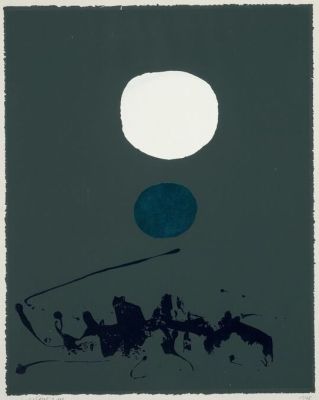About Adolph Gottlieb
American, 1903-1974
Growing up during the Depression and maturing throughout the interwar period and the rise of Hitler, American painter Adolph Gottlieb staunchly defended the art of the avant-garde - Abstract Expressionism in particular - for its ability to express authentic feeling in the face of the trauma of World War II. The themes of Gottlieb's paintings over the course of more than three decades still help us come to terms with both the difficulties - such as evil, war, violence, and ignorance - that we as humans encounter, as well as moments of the sublime aspiration and realization. Gottlieb's art employed universal symbols of his own invention that transcended time, place, and language to appeal to the level of the unconscious mind and to offer a pathway of release from a trouble-ridden period in history. As is demonstrated in his groundbreaking Pictographs, Gottlieb believed that new imagery was required in order to respond to the contemporary and subjective experience of the viewer. Rejecting traditional narratives, Gottlieb drew images and materials from many diverse sources, discretely arranging each image in individual compartments on the canvas. Without a clear syntax or narrative, Gottlieb intended for the arrangement of the images and their meaning to communicate and connect with an idea or feeling that already resided within the viewer. Gottlieb employed increasingly abstract symbols and continued to work toward universal meaning during his mature period. The goal of his later works was to use the simplest form in order to convey the complexity of life, exploring the emotional effects of colors and of space directly on the canvas.



